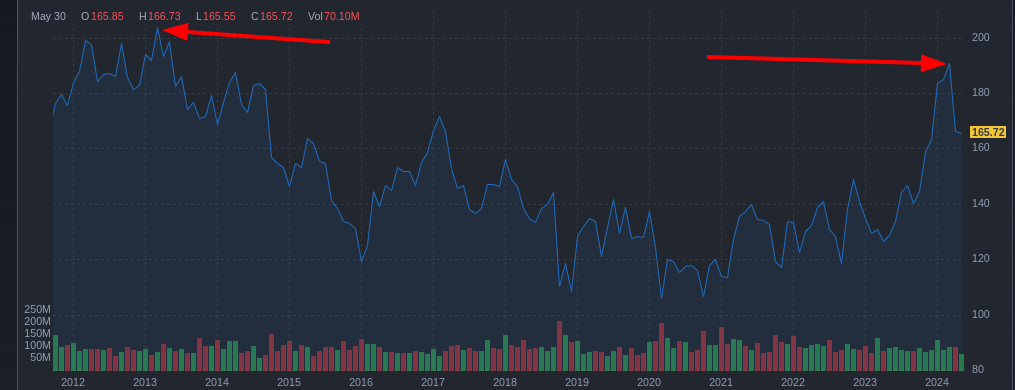 Introduction: The Importance of Financial Acumen in Investing
Introduction: The Importance of Financial Acumen in Investing
Investing is a complex and ever-evolving landscape that requires a keen understanding of financial principles, market trends, and risk management. While numerous factors contribute to successful investing, the key element to investing is sharpening your financial acumen. By developing a solid foundation in financial knowledge and continuously honing your skills, you can confidently navigate the world of investing and make informed decisions that align with your goals.
Financial acumen encompasses various skills and knowledge, including understanding financial statements, assessing risk, and making informed decisions based on market conditions. According to a study by the Financial Industry Regulatory Authority (FINRA), individuals with higher financial literacy are more likely to make better investment decisions and achieve their financial goals. For example, legendary investor Warren Buffett, known for his astute financial acumen, has consistently outperformed the market over his career, generating an average annual return of 20.1% for Berkshire Hathaway between 1965 and 2021.
Developing financial understanding is not a one-time event but a continuous learning and adaptation process. As markets evolve and new investment opportunities emerge, staying informed and updating your knowledge is crucial. This may involve reading financial news, attending seminars, or seeking advice from experienced professionals. A prime example of the importance of staying informed is the rise of cryptocurrencies in recent years. Investors who took the time to understand cryptocurrencies’ underlying technology and potential risks and rewards were better positioned to make informed decisions and potentially profit from the market’s growth.
Moreover, financial acumen is not just about making profitable investments but also about managing risk and preserving wealth. By understanding the potential impact of various economic factors and having a well-diversified portfolio, these investors were able to weather the storm and emerge stronger on the other side.
In conclusion, sharpening your financial acumen is the key element to investing success. By continuously expanding your knowledge, staying informed about market trends, and making informed decisions based on your unique financial goals and risk tolerance, you can unlock the full potential of your investments and achieve long-term financial success. As with any skill, developing financial acumen requires dedication, discipline, and a willingness to learn from successes and failures. However, the rewards of mastering this critical skill are well worth the effort, as it can help you build a secure financial future and achieve your life goals.
To excel in investing, grasping the financial markets’ fundamental concepts is crucial. This includes understanding the different types of investments, such as stocks, bonds, mutual funds, and real estate, and the associated risks and rewards. According to financial expert Robert Kiyosaki, author of “Rich Dad Poor Dad,” “The single most powerful asset we all have is our mind. If trained well, it can create enormous wealth in what seems instant.”
Additionally, it is essential to comprehend the basic principles of economics, such as supply and demand, inflation, and interest rates, and how they impact investment performance. Warren Buffett, renowned investor and CEO of Berkshire Hathaway, once said, “Risk comes from not knowing what you’re doing.” By educating yourself on these foundational concepts, you can make more informed decisions and mitigate potential risks.
Developing a Strategic Approach to Investing
Sharpening your financial acumen also involves developing a strategic approach to investing. This entails setting clear investment goals, determining your risk tolerance, and creating a diversified portfolio that aligns with your objectives. As Peter Lynch, former manager of the Magellan Fund at Fidelity Investments, advises, “Know what you own, and know why you own it.”
One effective strategy is to adopt a long-term perspective and focus on quality investments with the potential for sustained growth. According to a study by Vanguard, a global investment management company, a well-diversified portfolio with a long-term horizon can yield 6-7% annual returns, outperforming short-term, speculative investments.
Staying Informed and Adapting to Market Changes
The financial markets are dynamic and constantly evolving, influenced by many factors such as economic indicators, geopolitical events, and technological advancements. To sharpen your financial understanding, staying informed about these developments and adapting your investment strategy accordingly is imperative. As John Bogle, founder of The Vanguard Group, emphasizes, “The stock market is a giant distraction from the business of investing.”
One way to stay informed is to regularly read financial news and analysis from reputable sources, such as The Wall Street Journal, Bloomberg, and CNBC. Additionally, attending financial seminars, workshops, and webinars can provide valuable insights and opportunities to learn from experienced investors and industry experts.
Leveraging Technology and Data Analysis
Technology has revolutionized how we invest and manage our finances in the digital age. Sharpening your financial acumen involves leveraging these tools to make data-driven decisions and optimize your investment strategy. According to a report by Accenture, a global professional services company, “By 2025, AI-powered financial services will be the new normal, with 77% of financial institutions using AI to automate tasks and improve customer experiences.”
From robo-advisors that provide automated investment management to data analytics platforms that offer insights into market trends and risk factors, technology can help you make more informed decisions and streamline your investment process. However, it is important to remember that technology is a tool, not a substitute for human judgment and expertise.
Seeking Professional Guidance and Mentorship
While sharpening your financial acumen is a personal journey, seeking professional guidance and mentorship can accelerate your growth and help you avoid common pitfalls. According to a study by Fidelity Investments, individuals who work with a financial advisor tend to have higher retirement savings balances and more diversified portfolios than those who manage their investments independently.
Consider working with a certified financial planner (CFP) or a registered investment advisor (RIA) who can provide personalized advice and help you develop a comprehensive investment plan. Additionally, joining investment clubs or networking with successful investors can provide valuable mentorship opportunities and expose you to new ideas and strategies.
Conclusion: Embracing Lifelong Learning in Investing
The key element to investing is sharpening your financial acumen, a lifelong process that requires continuous learning, adaptation, and growth. By understanding the fundamentals of investing, developing a strategic approach, staying informed about market trends, leveraging technology, and seeking professional guidance, you can confidently navigate the complex world of investing and achieve your financial goals.
As Benjamin Franklin wisely said, “An investment in knowledge pays the best interest.” By investing in your financial education and constantly refining your skills, you can unlock the full potential of your investments and build a secure financial future. Remember, the journey to financial success is not a sprint but a marathon – and sharpening your financial understanding is the key to crossing the finish line victorious.
From Classics to Current Affairs: Timeless Topics

Difference Between Saving and Investing is that…

Which of the following is not a reason that a corporation would issue preferred stock?

Unraveling the Intricacies of Risk and Reward: 5 Sophisticated Discussion Questions

What is the relationship between risk and reward when investing?

The Refined Art of Investing in Preferred Stock Dividends

Unlocking the Secrets of General Stock Market Trends with Grace










